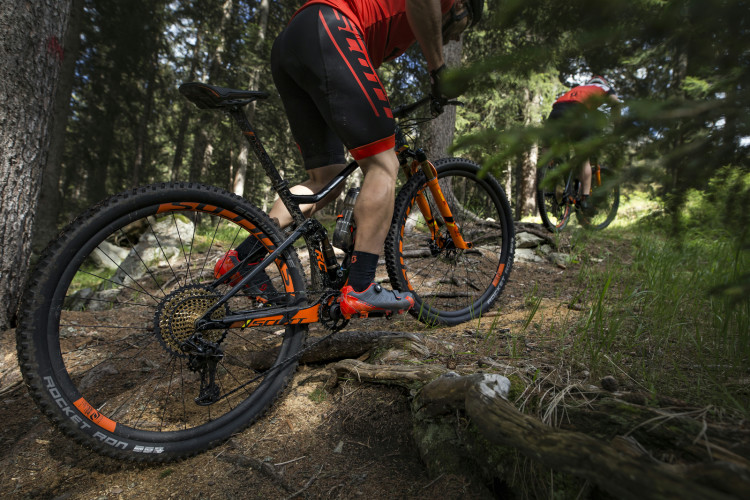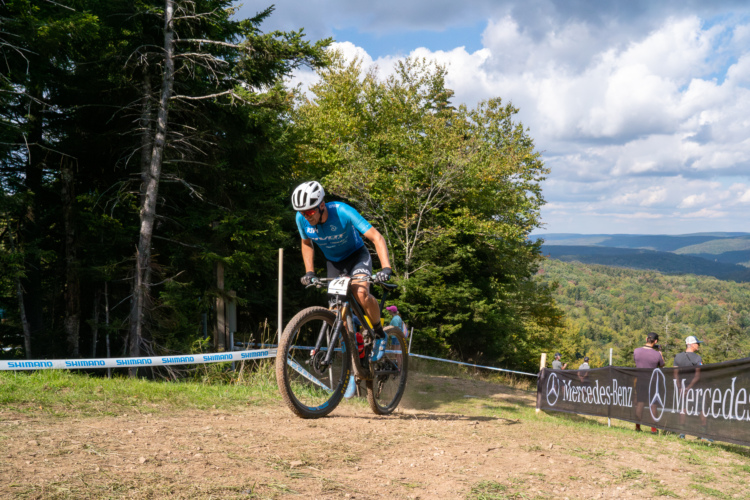
You know that voice? The one deep down inside that likes to keep you in your place, the one that second guesses all the time, tells you to be afraid, and says it’s just easier to give up?
Yeah, that voice.
This is the year you teach that voice to put a sock in it. And you do it by going out and getting a good ass kicking. And loving every minute of it.
Yep, it’s time to enter an endurance race.
Don’t let the R-word scare you. Because, really, this is about much more than showing up, pinning on a number, and throwing down to see who can stand on the podium. In fact, don’t think about the competitive part of it at all, who else will be there, or what your time will end up being.
This isn’t about any of those things. Not even a little.

Putting It On the Line
Before we go any further, let’s put some definition around what we’re talking about when we say “endurance racing.” Most importantly, this is about spending time in the saddle, pushing yourself further than you have before, and testing your mettle. That will mean different things to different people. At the very least, consider an event that will take you six hours to complete. If that’s fairly typical for a weekend ride, then go for something that takes more time and effort. The key is to get to that point where that awful voice is menacing you at every painful pedal stroke.

This is how you prove to yourself – once and for all – how damn tough you truly are. And that you have the mental tools and physical resilience to push through the wall of pain, the aching muscles and sore feet, the stomach that turned sour 45 minutes ago and can’t possibly take another gel, block, or swallow of watered-down go-fast juice.
It’s about conquering your fears… and putting THAT voice in its place. What better way to do it than on the bike?
[see_also id=”189859″][/see_also]
Suffering is A Life Skill
Don’t take my word for it. Just listen to what Cameron Chambers has to say about working hard on the bike, how it translates to everyday life, and can inspire you to keep putting one foot in front of the other.
“I think above all, I learned to take everything a step at a time,” he explains. “I couldn’t wrap my head around the distance or time [when I raced]. I’d have to set these micro goals. Get to the next water bottle, that was a victory. Get to the next checkpoint.
“Not focusing on the big picture,” he adds, “that’s something that really still reverberates with me. If there is something in life now that overwhelms me, I think about my 24-hour racing and focus down on the next thing on the horizon. Racing is something that really happened so it’s something I went through and can draw strength from versus a positive statement or meme from the internet,” he concludes.
Cameron should know. When he’s on a mountain bike, magical things can happen. I knew that when I first saw him race regional events in Kansas City more than 15 years ago. Here was this kid from nowhere Kansas showing up on a rigid Karate Monkey with one gear, taking on teams from all over the Midwest. They’d smirk at his bike; that is, until he buried them and could never be reeled back in. He’d humbly smile from the top step of the podium, shake their hands, and congratulate them for a good race.

Since then he’s pulled five national championship jerseys over his head, four of them for 24-hour racing (in various forms) and one for cross country. While he’s not so much interested in racing these days, he still draws on those experiences and the lessons they taught him.
“I learned the power of quieting my mind,” Cameron says. “Not getting distracted, being present in the moment, and carrying out the task.”
Racing and getting in over his head also taught him to trust in his ability to fight his way back. “I’ll get into situations because I know I can get out of those,” he admits. “My greatest asset is that I’m willing to take a risk.”
Obviously, Cameron had learned a lesson we all can, and it’s that you can get pretty far out in the deep end and rely on a powerful reservoir within yourself to fight your way back.
“Okay,” you say, “but Cameron is an elite athlete, right?” True enough but, according to him, everyone feels the same when they’re out there.
“There’s nothing different, really, what an average person is going through and what the leaders are feeling,” he says. “The process is the same. . .what you’re facing, what you’re learning about yourself, those lessons aren’t any different. They are just going through them at a faster speed.
“Even when you fail, and I’ve had massive failures, when you tried your hardest you’ll be okay with the effort,” he continues. “It’s something that translates to life as well. When you’ve tried, you have nothing to be ashamed about. And next time you’ll try harder because your motivation is through the roof.”
Remember that You’re Doing Something You Love
The thing is, you’re riding your bike. And if you’re like me, that means you’re doing something that defines a large part of who you are as a human being. It means you’re not someone who runs from risks, that you embrace adventure, and willingly accept uncertainty with a quick little “yep, I’m in.”
Now just take that a step further. Try your hand at pushing yourself a bit more.

What I’ve found is that once the pain is over and the soreness begins, so too does the gratitude at the lessons learned, and for the experience. Instead of a mind filled with fleeting whispers of doubt, and the constant rat-a-tat of everyday life, I find serenity. I am inspired by my own ability to take a beating and stand back up. That brings me peace that often lasts for weeks.
That’s what makes endurance events incredible. My friend Keith used to say, “if it were easy, anyone would do it.”
Damn straight.

Time to Become a Super Hero
Okay, so chances are you won’t be hanging a few national championship jerseys in the closet. No matter. If you get out there and go for it – even if you fail – you’ll still be a hero to your friends and family. And most importantly, to yourself.
Cameron has some tips on how to prepare. “If you’re going to go long, you have to ride long,” he says. But the biggest thing is consistency. “That trumps everything. One of my mantras is something is infinitely better than nothing. So keep being active; [make] working out and exercising a part of your daily life. If it’s really short, just get the time in.”
Ultimately, though, for a bigger event, it takes hours in the saddle. “If you can get up to 75 percent of the volume of your event the month leading up to it,” Cameron says, “then you’re on your way.”

This Is Your Year
As I was writing this I was thinking about an amazing woman I admire very much: Rebecca Rusch. I recently saw on social media that her and her husband, Greg, had gone out into Yellowstone for a ride when it was 30 below zero.
“Yep,” I thought, “that figures.”
[see_also id=”54099″][/see_also]
Though the team turned back because it was too cold and they are clearly smart enough to not endanger themselves or others unnecessarily, Rebecca is well known for pushing her own limits well beyond the breaking point and figuring out how to conquer her pain, fear, and a litany of absolutely obscene obstacles.
Yet when you meet her and have a chat, she doesn’t look or sound like a super hero. In fact, she seems entirely normal. I mean like, next door neighbor normal. But deep inside, there beats the heart of a warrior poet, a tangle of nerves and muscles carved from hardened, battle-worn steel. But she wasn’t born that way, I’m guessing. Rather, she developed her resolve by testing herself over and over again.
Thing is, you probably look normal, too. But you aren’t really. Not by a long shot. And this is the year you need to get out there and show yourself the truth, because you can.
Getcha Some
If you’re ready – and I know you are – get on over to the Singletracks.com race calendar and pick yourself out at least one event that you want to do, and sign up.
From Cameron’s point of view, some of the events he really likes include True Grit Epic in St. George, Utah. “It’s so beautiful, it has fun riding, a good mix of tech and faster jeep trail,” he says. “I really like it. Such a great event.”
He also likes the Wilderness 101 in State College, Pennsylvania; the Berryman Trail Epic in Potosi, Missouri; and the Bailey Hundo in Bailey, Colorado.
If you are already a beast, maybe you can step into the ride Cameron says is the “hardest I’ve ever done. The first 33 miles would put most people under.” He’s speaking of the Breckenridge 100, held in July… so there’s still time to train. But you better get going now.
[see_also id=”22867″][/see_also]





















4 Comments
Jan 24, 2017
Jan 24, 2017
My somewhat limited experience with this is that there will definitely be tough sections that put the hurt on early in an endurance race, and in the latter stages of the race you will hurt constantly and have to push through that in order to finish or hit your time goal. But for much of an endurance race, the very nature of the event means you get/have to be a bit conservative and enjoy the ride.
Jan 24, 2017
Great article...thanks!!
Jan 24, 2017
The longer format stuff is more about testing your ability to withstand a lower level of discomfort, maybe for longer, but it allows you to work with it and your mind to overcome. And for sure it's not so terrible. You can set your own pace for the most part and then face the music when and where it comes.